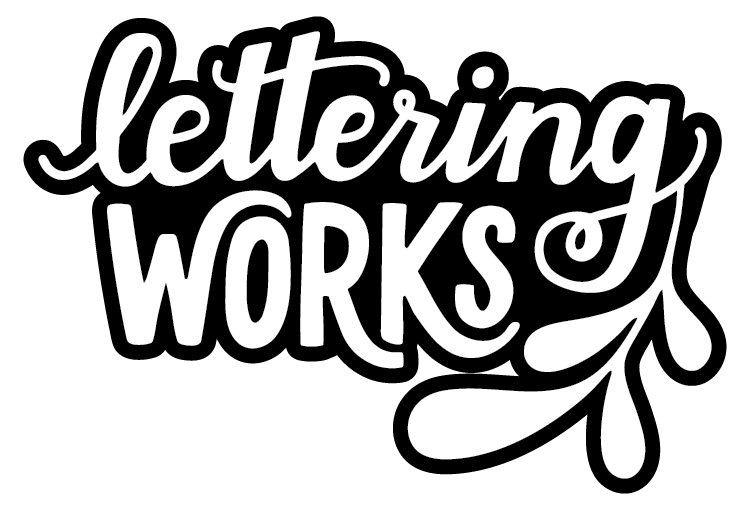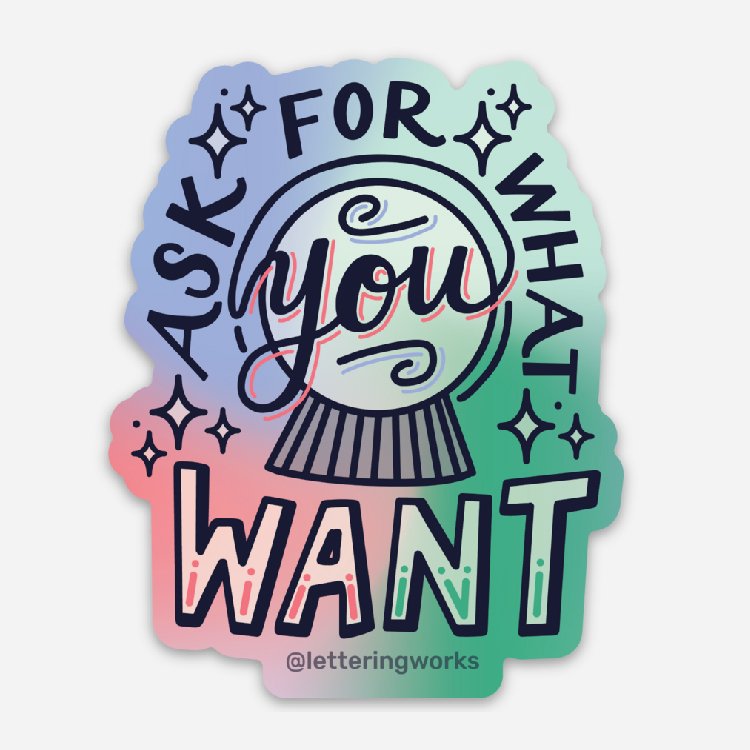10 Thought-Provoking Questions Every Aspiring Designer Should Ask an Industry Pro (Answered)
I was recently connected with a student at Columbia College, Elya Stumbaugh, who had some questions for me as a working artist and entrepreneur. I wanted to share my responses here, in case they might helps someone else as well.
Who are the people that inspire you?
I am constantly inspired by other artists, designers, and creators. Despite this, sometimes I find myself getting stuck in how to apply that inspiration because what they share is often visual and may compete with any visions I have for my own work. Because of this, I also love drawing inspiration from outside of the design world. Much of my inspiration comes from traveling and exploring different places, from small business owners who do work that is completely different from me, and from my community at large. I find that I love to translate abstract ideas outside of the design world into my own designs and also see how I can best represent various communities and identities through my work.
Chelsie Tamms sketching new sticker designs
Sketching the Mental Health Matters collection
What keeps you excited about your work?
In short, the creative work itself and the impact it has. The reality of owning a small business is that I’m not always working on the most exciting client projects. I am intentional about incorporating passion projects to keep the work that I love most at the center as much as possible. I strategically use these projects to attract ideal clients and future projects that align with my interests and skills. When business feels slow, it’s nice to have these projects to keep me going. When business is a bit busier, I still enjoy doing this creative work.
I also enjoy seeing the impact that my work has - from knowing that I am contributing to quality souvenir options in Chicago to knowing that a logo I made recently is empowering a small business owner to put herself out there in new ways. Reminding myself that my creative work has value and makes a different in my community and beyond is really empowering and keeps me going when things feel difficult.
Were there any business or leadership skills that were hard for you to build or learn?
In college, I studied graphic design, Spanish, and marketing. Because of this, starting my own business did feel a little overwhelming. I didn’t take many traditional business classes, which made me feel like I had a lot of business and leadership skills to learn. The beauty of owning my own business has been that I get to learn and apply new things constantly.
If I had to pick one skill that was particularly hard for me to learn, it would be negotiation. I think it’s difficult because there are so many great tools and tactics out there, but it can also be difficult to put them into practice. Many situations are high-pressure, so part of learning to negotiate is learning to create space and time around these communications. Another aspect of negotiation is knowing when to say no. I’m continuously working on building up my muscle to say no to things that don’t work for me or serve me.
Spread Love Not Hate (original sticker design in English)
Esparce Amor No Odio (redrawn design in Spanish)
Is there a previous skill you learned that ended up being surprisingly helpful for what you do now?
I have found studying another language to be surprisingly helpful in my design practice because I think a lot about different languages and cultures perceive messages and designs differently. I often look at my work as I am creating it and wonder how someone who doesn’t speak the language I’m designing or lettering in would interpret it. While I haven’t spoken much Spanish since graduating, it has definitely influenced my creative practice and served as a hidden skill.
In terms of more generally valuable skills for owning your own business, I think time management, organization, being good with numbers and spreadsheets, and knowing how to market yourself are all incredibly valuable.
What pricing strategies do you use? How does it vary by type of client?
I primarily price projects on a case-by-case basis and typically opt for a project-based rate vs. an hourly rate. Each project and client is different, so it’s important to consider various factors like the project’s timeline, ideal budget, required deliverables, as well as its intended usage. I also take into consideration my overhead costs and hidden labor, like administration tasks and meetings. At the end of the day, I believe pricing is all about creating something of value and aligning with someone who believes in that value and is willing to engage in an exchange.
Photo by Shannon D.Wyatt Photography
Pedestrian by Choice Passion Project
What do you do when you hit a wall creatively?
I find the easiest solution to be taking a walk or a break. A more involved option is to focus on a passion project or ideating on something new. Removing some of the pressure and allowing for more free-flowing creativity can help get me back into a groove.
I am intentional about building project timelines that are flexible and allow me to work in a very natural and lower pressure way, which I find yields the best results for both me and my clients. I am often creating because I feel inspired to, not solely because I feel pressured to.
What are your tips and strategies for making sure you and your client are on the same page?
The biggest tip I have for making sure you and your client are on the same page is to have clear communication and a defined process. I consider my role as a brand designer and lettering artist to be guiding my clients through the design process and educating them along the way. If they could do this work themselves, I’d likely encourage them to do so. When they entrust me with a project, I am committed to working towards the best solution. When we find ourselves on different pages, I find that it’s helpful to provide context, information, and reasoning behind choices that they might not otherwise understand. I bring my perspective and expertise to the table and encourage them to listen to my advice and consultations, while also giving them opportunities to have input and voice any potential concerns.
Is there a notable time you had to compromise a design, and how did you approach it?
The nature of design and working with clients lends itself to compromise. There are times where clients want something different than my vision or what I think is best for them. I am able to navigate these changes by first educating clients as best as I can and providing rationale for my design choices. From there, it is often up to them on how they want to proceed. I’ve had clients fully trust me and my creative decisions, clients who push back a little, and other clients who push back a lot.
As long as I feel respected by the client, I am happy to engage in a dialogue around the various options available to them. When clients require compromise that I am not willing to make, then I see how I can renegotiate or walk away from the opportunity. For me, it comes down to a you-win-some-you-lose-some mentality. Some battles are worth fighting and others are not. I find that my clients get the most value from me when they trust my creative decisions and are open to hearing my advice and recommendations.
Design from Shop Local Chicago Campaign/Passion Project
Custom sticker of Omar of Omarcito’s
On your website you mention how you frequently go out to eat and visit local businesses. Have any of these experiences led to inspiration, and/or helped you become a stronger designer?
I am heavily inspired by my community, small business owners, and Logan Square specifically. I love the creative vibe and energy of my neighborhood and values placed on community and supporting small and local. Engaging with my local community has lead to fruitful passion projects and paid work.
I think these experiences have not only made me a stronger designer, but a more sensible and thoughtful business owner. There is so much we can learn from our neighbors and I love seeking out opportunities to support them in larger ways.
Has teaching (and interacting with the people who took your courses) changed how you approach your work or how you solve problems?
Teaching has helped me solidify my own process and beliefs as both a designer and business owner. I didn’t start building educational resources to replace my creative work, but instead to help those that are a few steps earlier in their journey. I have greatly appreciated the positive feedback that I’ve gotten from my students and enjoy being able to meet them where they are at and help problem solve as their businesses grow and evolve.
Creating and offering online courses has helped me recognize the value of my time and the knowledge that I’ve accumulated in business. It’s also helped me discern who I am good fit to work with. Mindset is everything in small business ownership and seeing how people respond and interact with my work has helped guide me to the right people.
My courses are linked below for anyone interested in checking them out. I created a special discount code for students interested in taking Self-Made Artist Academy as a supplement to what they are learning in school (or for anyone who has found that traditional schooling isn’t for them). Use SMAA-PWYC at checkout for 50% off.
Know Your Worth (and then add tax.) gif
Ask for What You Want sticker
Do you have any extra advice you’d like to give to student designers and artists?
Don’t work for free. Working for yourself on something like a passion project can be misconstrued as working for free, but I often see it as an investment in yourself and your future. It’s very different than offering your services and skills to others to build up your portfolio. Create for yourself first. And if you simply need clients or projects to pay the bills, start smaller and carve out some time to invest in building your skills, your ideal portfolio, and experience.
Also, remember that you can work for things that aren’t money. Instead of selling yourself short, learn to negotiate your worth and exchange things of value instead of volunteering the skillsets that you are trying to get paid for. Volunteer on your own terms and don’t be afraid to ask for what you want.
Turn your art into a sustainable career using this step-by-step program to gain the business knowledge you need. In this on-demand online course, you’ll find six, jam-packed modules, a downloadable PDF workbook, and bonus access to both Are You on Brand? and The Power of Passion Projects mini courses
“Chelsie does a great job of laying out the basics while also empowering further individual exploration, especially into the importance of building your business in a way that helps you reach your own goals.”
An on-demand online mini course that covers everything from branding basics to how to know if it’s time for a brand refresh
A step-by-step online mini course for crafting a winning passion project that helps you proactively achieve your biggest goals
Go from frustrated scribbles to lovely lettering by understanding the basics of drawing letters in this popular online workshop














